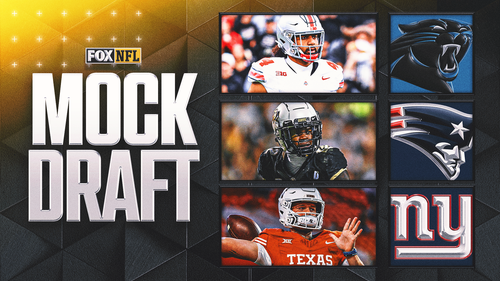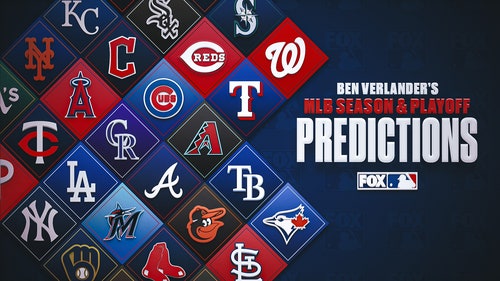
Why the Dodgers committed $325 million to Yoshinobu Yamamoto
Editor's note: Yoshinobu Yamamoto has reportedly agreed to a 12-year deal worth $325 million with the Los Angeles Dodgers, which would be the largest contract ever for a pitcher. One week before the signing, we analyzed what makes Yamamoto special.
Yoshinobu Yamamoto has yet to throw a pitch in Major League Baseball. He will soon become one of the sport's highest-paid players ever.
With Shohei Ohtani off the board, the Japanese ace is now the market's most sought-after free agent. According to Yamamoto's agent Joel Wolfe, approximately 13 teams inquired about the 5-foot-10 right-hander within minutes of his posting by Nippon Professional Baseball's Orix Buffaloes last month. And with the deadline to sign Yamamoto drawing closer (Jan. 4th), teams are increasing their efforts to land the three-time Sawamura Winner (NPB's Cy Young).
But what exactly makes Yamamoto such a hot commodity? Why are teams so eager and reportedly willing to dish out a quarter of a billion dollars to a guy with zero career big-league innings?
Some of the reasons — age, pedigree, several suitors — are obvious. Yamamoto is only 25, which means that whoever signs him could enjoy the remainder of his prime. He's been steamrolling the second-best league in the world since his 20th birthday. And many of the teams bidding for his services — the Yankees, Dodgers, Mets, Giants and Red Sox — are big-market heavy hitters with money to burn.
Thus, the price of the brick is going up. But another fundamental piece of the puzzle is Yamamoto's pitch data.
Since Masanori Murakami became the first Japanese-born big leaguer in 1965, more than 45 pitchers have made the jump across the pacific. Most of those hurlers were stars in Japan, and while many sustained that success stateside, others did not.
Determining whether a pitcher's stuff will translate against MLB hitters is (1) vital and (2) easier than ever. The advent of pitch-tracking technology means big-league organizations can pore over an NPB pitcher's data and analyze how that arsenal might play against better competition. As recently as 10 years ago, this process was — besides a fastball velocity reading from a radar gun — almost completely subjective.
Sources around the league expressed to FOX Sports that much of the confidence around Yamamoto is related to his underlying pitch data and how teams think that data will translate against MLB hitters. More specifically, clubs believe that the shape of Yamamoto's four-seam fastball, a pitch he threw 41.7% of the time in 2023, is built for big-league success.
First, let's talk about what "shape" means.
Fastballs are more than their velocity. The quality of a heater is reliant on factors like vertical/horizontal movement, release height, spin axis, spin rate, the angle at which it enters the strike zone, etc. There are good big-league fastballs at 91 mph and bad ones at 99 mph. So, while Yamamoto's average four-seam fastball velocity in 2023 (95.1 mph) was well higher than that of the average MLB starter in 2023 (93.5 mph), the other characteristics of the pitch are a huge reason teams think Yamamoto can dominate in the bigs right away.
Here's what makes Yamamoto unique.

Horizontal movement on a fastball is an intuitive idea, but "vertical movement" is a bit harder to understand. Let me explain.
Almost all pitches move downward on the way to the plate simply because of gravity. A statistic known as "induced vertical break" measures how much a pitch moves absent of gravity's impact on the ball. Fastballs with higher vertical movement are basically telling gravity to pound sand, as they stay "on plane" longer. To a hitter, that gives the impression of a fastball having "ride" or "life." Good examples of this in MLB are Dylan Cease, Spencer Strider and Justin Verlander.
The average MLB four-seam fastball in 2023 had 15.7 inches of vertical break (h/t to the incredible work of Alex Chamberlain); Yamamoto's 2023 average was 18.5 inches. It's worth noting that the baseball in NPB is tackier than the one MLB uses, which should nerf Yamamoto's "vert" a smidge once he comes stateside. His average vertical movement during a small WBC sample with the MLB ball was closer to 17 inches, which is still well above average.
And when you consider the low release height from which Yamamoto unleashes his heater, the pitch gets even more unique. The lower the height a fastball is released from, the more it appears to be rising and the harder it is to hit. Strider has the prototypical low-release, high-spin, high-vertical movement, ride-oriented fastball that so many pitching development systems across the league love nowadays. But Yamamoto actually unleashes his four-seamer from a lower slot (5.5 inches) than Strider (5.9).
But add in velocity and command and Yamamoto's heater gets even more special.

Strong company.
And none of this even speaks to the dastardly splitter Yamamoto threw 26.3% of the time in NPB last year. It's a tumble-off-the-dinner-table offering that shredded opposing hitters during his short run in the World Baseball Classic and is easily Yamamoto's best secondary pitch. Big-league pitchers are throwing more splits than ever before, but the offering remains rare in comparison to NPB.
If Yamamoto was a four-seam reliant, one-pitch wizard (that's essentially what Mariners hurler Bryce Miller, listed above, was in 2023), teams would still be incredibly interested. But the splitter takes him to another level entirely.
The one area of relative concern is Yamamoto's curveball. That breaker was his tertiary offering last year and was really effective against hitters in NPB, but that style of curveball — slow, long, loopy, with a large arc (think Clayton Kershaw, Adam Wainwright) — has fallen out of style in the big leagues recently because it's easier for hitters to track. How that pitch plays in the bigs and whether the team that signs Yamamoto opts to try and alter his curveball could play a significant role in his overall performance.
Yamamoto also has a cutter (8.5% usage), sinker (5.9%) and rarely used slider (1.8%). It wouldn't be surprising to see an MLB club tinker with his cutter/slider shape and increase the usage. As a whole, teams are incredibly bullish on Yamamoto's overall athleticism, body awareness and ability to make adjustments.
All these factors added up explain why the young hurler is garnering such an outrageous level of interest. Most front offices nowadays use this type of information — frankly, what I've shown here is child's play for MLB teams — to help inform and dictate decision-making.
Information is power and power is money, and Yamamoto is set to make an ocean of it.
Jake Mintz, the louder half of @CespedesBBQ is a baseball writer for FOX Sports. He played college baseball, poorly at first, then very well, very briefly. Jake lives in New York City where he coaches Little League and rides his bike, sometimes at the same time. Follow him on Twitter at @Jake_Mintz.












































































































































